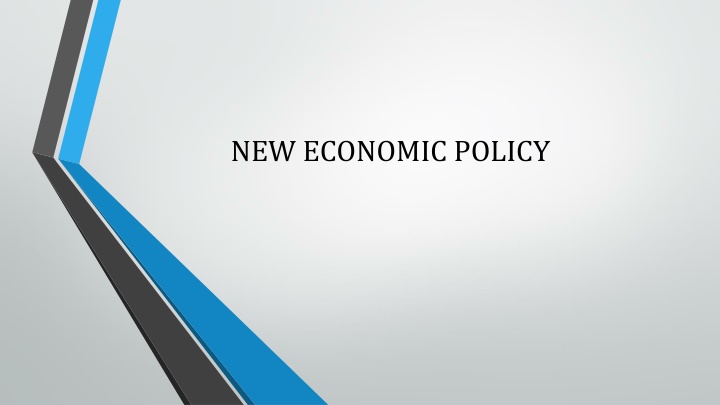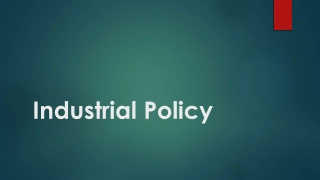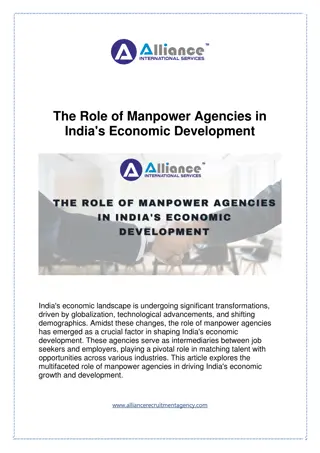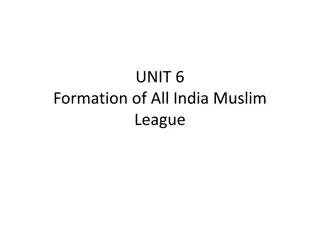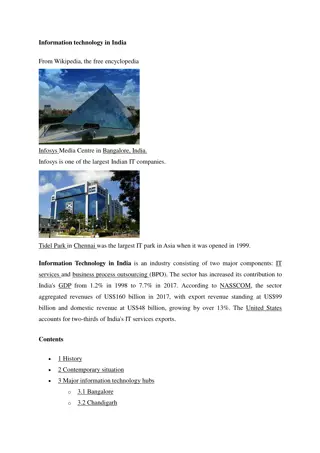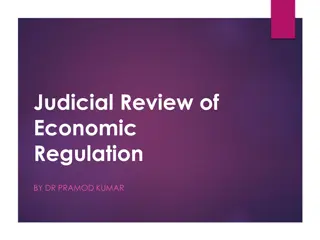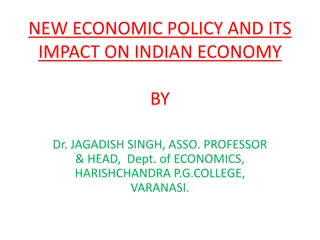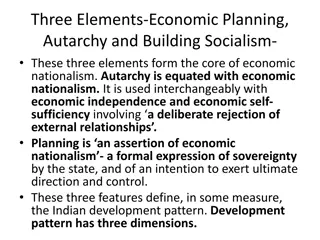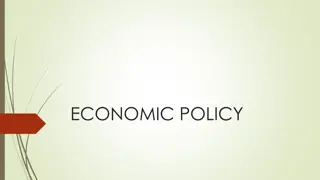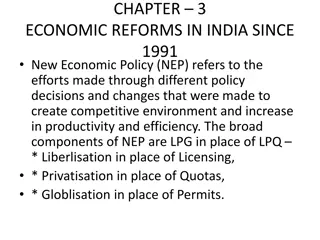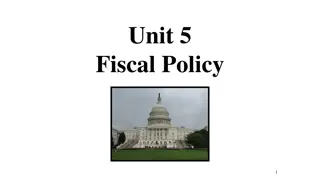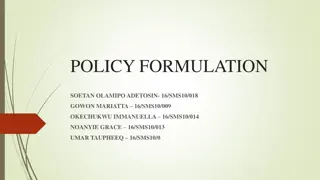Overview of the New Economic Policy of India
The New Economic Policy (NEP) of India was launched in 1991 under the leadership of P.V. Narasimha Rao, aiming to open up the Indian economy to global exposure. This policy, also known as the LPG model of growth, focused on reducing import duties, opening reserved sectors to private players, devaluing the Indian currency for increased exports, and achieving economic stabilization. The objectives included globalization, market orientation, reducing inflation, increasing economic growth rates, building foreign exchange reserves, and transitioning to a market economy by removing restrictions and promoting private sector participation.
Uploaded on Apr 13, 2025 | 0 Views
Download Presentation

Please find below an Image/Link to download the presentation.
The content on the website is provided AS IS for your information and personal use only. It may not be sold, licensed, or shared on other websites without obtaining consent from the author.If you encounter any issues during the download, it is possible that the publisher has removed the file from their server.
You are allowed to download the files provided on this website for personal or commercial use, subject to the condition that they are used lawfully. All files are the property of their respective owners.
The content on the website is provided AS IS for your information and personal use only. It may not be sold, licensed, or shared on other websites without obtaining consent from the author.
E N D
Presentation Transcript
NEW ECONOMIC POLICY The father of NEP: New Economic Policy of India was launched in the year 1991 under the leadership of P. V. Narasimha Rao. This policy opened the door of the India Economy for the global exposure for the first time
NEW ECONOMIC POLICY The LPG model of growth: The P. V. Narasimha Rao government reduced the import duties, opened reserved sector for the private players, devalued the Indian currency to increase the export. This is also known as the LPG Model of growth
NEW ECONOMIC POLICY Objectives: The union Finance Minister Dr. Manmohan Singh are stated the objectives as follows: To plunge Indian Economy in to the arena of Globalization and to give it a new thrust on market orientation The NEP intended to bring down the rate of inflation It intended to move towards higher economic growth rate and to build sufficient foreign exchange reserves.
NEW ECONOMIC POLICY Objectives: The union Finance Minister Dr. Manmohan Singh are stated the objectives as follows: It wanted to achieve economic stabilization and to convert the economy into a market economy by removing all kinds of un- necessary restrictions. It wanted to permit the international flow of goods, services, capital, human resources and technology, without many restrictions. It wanted to increase the participation of private players in the all sectors of the economy. That is why the reserved numbers of sectors for government were reduced. As of now this number is just 2.
NEW ECONOMIC POLICY Liberalisation 1.All commercial banks were now free to fix their interest rates. This was previously done by the RBI. 2.Investment limit for small-scale industries was increased to Rs. 1 Crore. 3.Indian industries were given the freedom to import capital goods. 4.Companies were given the freedom to expand and diversify their production capacities based on market requirements. Previously, the government used to fix the maximum limit of production capacity. 5.Restrictive trade practices were abolished. Licensing was removed in the private sector and only a few industries were required to obtain licenses, namely, liquor, cigarette, industrial explosives, defence equipment, hazardous chemicals and drugs.
NEW ECONOMIC POLICY Privatisation 1.Under this, many public sector undertakings (PSUs) were sold to private players. 2.PSU shares were sold to private players. 3.PSUs were disinvested. 4.The number of industries reserved for the public sector was reduced to 3 (mining of atomic minerals, railway and transport, and atomic energy).
NEW ECONOMIC POLICY Globalisation 1.Tariffs were reduced reduction of customs duties in import and export to attract global investors. 2.Foreign trade policy was for the long-term Liberal and open policy was enforced. 3.The Indian currency was made partially convertible. 4.The equity limit of foreign investment was increased.
NEW ECONOMIC POLICY THANK YOU
